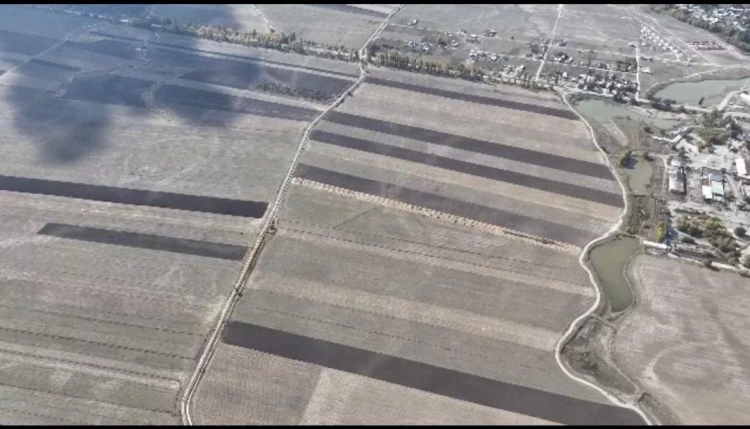Waqf Documents
Undoubtedly, the waqf madrasa of Alymbek is one of the largest agricultural estates of the feudal lord, but not the only one.
The fact that Alymbek had, in addition to the waqf property, other plots of land in the same Fergana can be inferred from the repeatedly encountered mentions in waqf documents (waqf-nama) and purchase deeds (vasikas) regarding Alymbek's land parcels bordering other properties.
The vicissitudes of court service, rivalry, and internal conflicts led to the rapid decline of Alymbek's star. He fell victim to the intrigues of his rival - the influential Kyrgyz-Kipchak Alymkul.
It is clear that all of Alymbek's property, including real estate in Fergana, was confiscated. However, the waqf madrasa of Alymbek remained untouched. Its management passed into the hands of the descendants of the Kyrgyz feudal lord. The first mutawali after Alymbek was his eldest son Jarkinbay Mirza datka, followed by other sons - Abdullabek, Batyrbek, Hasanbek, etc. In the 20th century, the mutawalis included S. Tanybekov, Mulla Baiba, Mulla Psam, and the last - Abdulhakimov Abdul Majid, who handed over all affairs to the waqf department under Soviet authority to the aforementioned D. Zainabitdinov.
Thus, seeking to secure themselves against uncertainty in the future, Alymbek's heirs preferred to formalize their real estate as waqf, which, being hereditary by will, firstly, preserved the owners' right to manage the income from the land, and secondly, was officially considered to belong to a Muslim spiritual institution and could not be subject to confiscation. Moreover, waqf was fully or partially exempt from taxes to the state treasury.
A particularly interesting waqf document written on a single sheet contains actually three documents of different times regarding the donation of land and trading shops to the waqf of the qari-khana of the Saray quarter in the city of Osh. One of the donors is Abdullabek, the son of Alymbek datka.
From the first document, it is evident that the waqf of seven trading shops, two mills, and three plots of land was designated for the benefit of the qari-khana, mosque, daras-khana, and eight cells by the brothers and sisters of Mir Sakibay from the inherited estate.
The waqf-nama was formalized in 1863, and one of the brothers - Mulla Mir-Baba - was named as the mutawali. The conditions for the distribution of the waqf income were also clearly stated: for the repair of buildings, and from the remainder - one part to the mutawali, four to the teacher of the qari-khana, and five for the benefit of the students. In practice, as a rule, all income was distributed, and the repair of the building was invariably postponed until its complete destruction.
The second document was drawn up in 1869 in the name of Abdullabek, who donated a mill on the Altybai canal in the city of Osh "to the waqf for the benefit of the qari-khana under the conditions outlined in the first document."
Finally, the third paper of similar content was drawn up in the same year, 1869, on behalf of Sara-Bibi, the daughter of Mir Sakibay, who, under the conditions specified in the first document, donated a plot of land on the Nurdar canal in the city of Osh, inherited, as well as a cauldron and a copper kumgan.
By his corresponding decree from 1871, Khudoyar-khan exempted the waqf donation of Abdullabek and Sara-Bibi from taxes. Consequently, all income from the donated property now went to the benefit of the waqf and was under the full control of the mutawali. And if earlier, both the brothers and other donors, particularly Abdullabek, had to pay taxes to the treasury for their land (which amounted to 11 desiatinas and 2540 sazhen according to the three documents), shops, and mills, now this entire amount was managed solely by the mutawali, who was from the family of the waqf founder. In other words, having committed a "pious" act and donated part of their property to the waqf, the waqf founders simply evaded tax payments, gaining an additional source of income.
The same Abdullabek datka also formalized in 1875 two adjacent plots of land in the waqf madrasa of his father along the Osh say in the Shahidan-tepe quarter and the Saray-kucha quarter, with a total area of about 14 tanaps. One of the plots contained trading shops. Abdullabek retained the right of mutawali-manager, i.e., he effectively maintained the hereditary waqf (naqf-avlod) of his father.
Waqf Madrasa of Alymbek















































